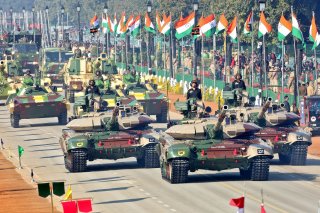Mike Pompeo: ‘The U.S. Will Stand With India’ Against China
Pompeo has used strong words, suggesting that the CCP is not a friend to democracy, the rule of law, transparency, or to freedom of navigation in the Indo-Pacific region.
On Tuesday, United States Secretary of State Mike Pompeo made it clear to the government of India that America will support its Asian almost ally. Pompeo offered his support to India while mentioning the Indian soldiers that were killed near the Line of Actual Control (LAC) in the eastern Ladakh’s Galwan Valley following a clash with the Chinese People’s Liberation Army (PLA) in June.
“We visited the National War Memorial to honor brave men and women of Indian armed forces who sacrificed for the world’s largest democracy, including 20 killed by PLA in Galwan Valley,” the secretary of state said.
Pompeo then offered a declaration aimed as much at Beijing as to those in New Delhi, stating, “The U.S. will stand with India as they confront threats to their sovereignty and to liberty,” as part of a joint statement after the 2+2 India-U.S. Ministerial Dialogue.
“The U.S. and India are taking steps to strengthen our cooperation against all manner of threats and not just those posed by the Chinese Communist Party (CCP),” Pompeo noted. “Last year, we have expanded our cooperation on cyber issues, our navies have held joint exercises in the Indian Ocean.”
Pompeo has used strong words, suggesting that the CCP is not a friend to democracy, the rule of law, transparency, or to freedom of navigation in the Indo-Pacific region. His statements that the United States would stand with India come as both New Delhi and Beijing have deployed and even fortified positions in the potential flashpoint that is the Galwan Valley.
Even as Washington has essentially told New Delhi that it has their back, President Donald Trump has offered to help defuse tensions. To date, he has received no indication of interest from either side.
The Quad Alliance
Just hours before the 2+2 India-U.S. Ministerial Dialogue, the Trump administration also notified Congress of plans for a $2.37 billion sale of Harpoon missile systems to Taiwan—that is the second major arms sale to the government in Taipei in just two weeks. The island nation is still considered by the CCP and Beijing as a renegade province.
China reacted to the first sale of weapons, which included sensors, missiles, and artillery systems in a deal worth a reported $1.8 billion, by announcing sanctions against U.S. defense contractors.
Despite Beijing’s protections and sanctions, U.S. laws such as the Taiwan Relations Act (Public Law 96-8), which was passed by Congress in 1979, require Washington to sell defensive systems to Taipei and, if necessary, provide the means to purchase such systems through the Foreign Military Sales program.
Pompeo has also been working on the Trump administration’s efforts to isolate China by building strong relationships with the Asian powerhouse’s rivals. In February, following Trump’s visit to the subcontinent, the United States and India concluded a defense deal worth $3 billion, while bilateral defense trade reportedly increased from near zero in 2008 to $15 billion last year.
Pompeo has sought to straighten the ad hoc alliance known as “the Quad”—which includes India, Japan, and Australia. It could even increase beyond just the four powers, as Washington has explored a new framework for Indo-Pacific cooperation dubbed “Quad Plus.” That could decouple the regional states for China economically—and that included Trump’s focus to actively push U.S. companies to move production out of China.
The United States could thus tell its partners including India, Taiwan, and Japan that it has their backs but the question is what could then happen if Beijing finds its back up against a wall.
Peter Suciu is a Michigan-based writer who has contributed to more than four dozen magazines, newspapers and websites. He is the author of several books on military headgear including A Gallery of Military Headdress, which is available on Amazon.com.
Image: Reuters.

